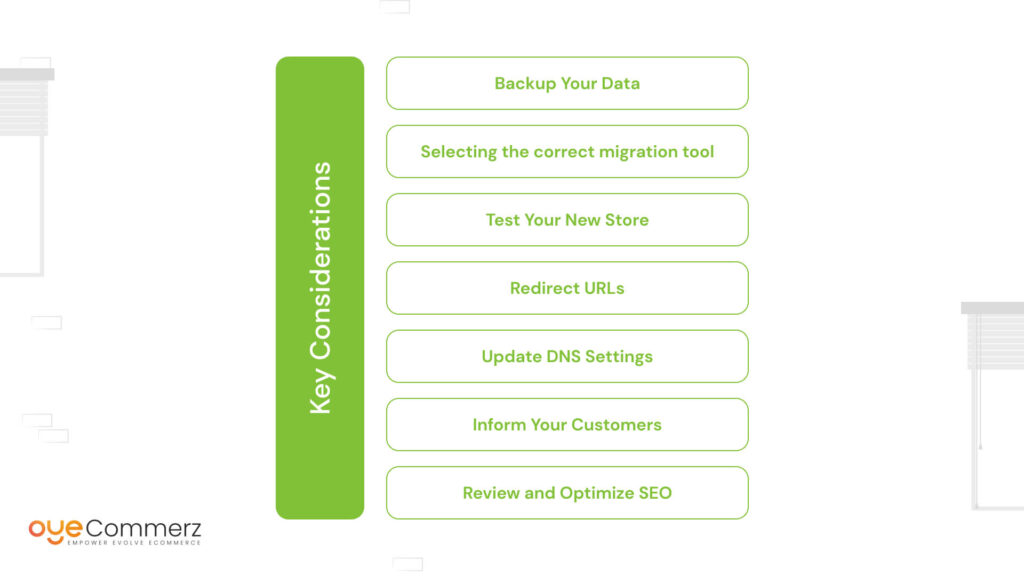In the dynamic world of online retail, choosing the best platform is vital for your brand’s prosperity. If you’re currently using WP and considering a migration to Shopify, you’re not the only one. Many businesses are making this transition to take advantage of Shopify’s robust features, user-friendliness, and growth potential. This guide will guide you on the steps of migrating from WordPress to Shopify seamlessly, ensuring that you realize your eCommerce potential.
Why Migrate from WP to Shopify?
Before starting the migration process, it’s essential to understand why this shift can be beneficial for your online store:
Intuitive Design: Shopify provides an intuitive system that streamlines store operations, making it easier for non-technical users.
Scalability: As your business develops, Shopify can accommodate greater visitors and sales without affecting speed.
Integrated Features: Shopify includes built-in tools for SEO, analytics, payment handling, and more, reducing the need for multiple plugins.
Robust Protection: With Shopify, you get access to robust security protocols that protect critical customer information.
Steps for a Seamless Migration
Migrating your eCommerce site from WordPress to Shopify includes several actions.
Here’s how to facilitate a successful transition:
Outline Your Migration Strategy
Start by mapping out your migration plan. Pinpoint which aspects of your present site you plan to transfer, such as:
Product data
User details
Purchase logs
Blog content
Pick the Best Migration Package
Considering your requirements, select a migration plan that aligns with your store. Professional services provides multiple plans:
Entry-Level Plan: Perfect for compact stores with fewer products.
Mid-Tier Plan: Recommended for growing businesses with moderate needs.
Premium Migration Package: Perfect for larger stores needing broad customization.
Secure Your Data
Prior to starting the migration, ensure that you have a comprehensive backup of your WP site. This task is essential in the event anything goes wrong during the transfer.
Extract Your Data from WP
Leverage extensions or custom scripts to export essential content from your WordPress site:
Products
Customers
Orders
Content pieces
Migrate Information into Shopify
When you have your content extracted, utilize Shopify’s built-in features or third-party apps Shopify migration strategy to transfer your data into your Shopify store. Verify that all content is accurately formatted and aligned.
Adapt Your Shopify Platform
After migrating data, adjust your Shopify site’s design to align with your style. Look into engaging a developer if you need complex customization.
Establish TransactionOptions and Delivery Settings
Arrange payment gateways and delivery choices in Shopify to facilitate a user-friendly transaction experience for customers.
Implement SEO Best Practices
To maintain your SEO performance during the change:
Set up 301 redirects from previous URLs to migrated ones.
Update meta tags.
Adjust images and text for SEO.
Review Your Updated Platform
Before launching, extensively check your Shopify site. Look out for any broken links, checkout failures, or untransferred content.
Publish Your Platform
After everything is in Shopify migration with OyeCommerz place, it’s the moment to publish! Inform the update to your clients and invite them to experience the updated capabilities of your Shopify store.
Post-Migration Support
Even after publishing your updated store, regular support is key. Explore engaging experts who can guide with:
Site maintenance
Promotional campaigns
Improvement strategies
Conclusion
Migrating from WP to Shopify can be a game-changing decision for your eCommerce. By adopting this guide and working with tools like those offered by industry leaders, you can achieve a effortless transition that improves your digital storefront. Embrace the opportunity and realize the potential of Shopify today!
